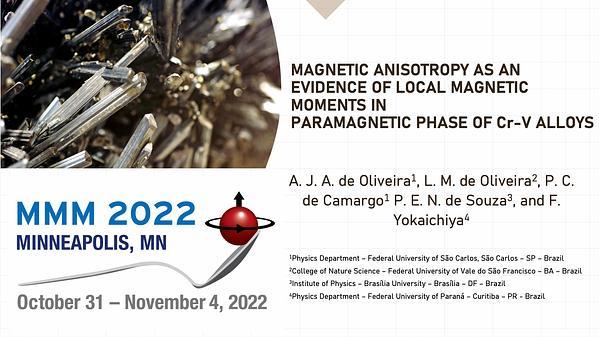Would you like to see your presentation here, made available to a global audience of researchers?
Add your own presentation or have us affordably record your next conference.
Spin-wave band structures can be engineered by varying the crystal geometries and this is important to facilitate the realization of many functional magnonic devices 1,
such as band stop filters and magnonic transistors. Recently, we have shown 2 the magnetostatic mode formation in an artificial magnetic structure, going beyond the crystal geometry to
a fractal structure, where the mode formation is related to the geometric scaling of the fractal structure. Fractals 3 are composed of self-similar structures across different length scales,
which look similar under different magnifications. This property is commonly referred to as dilation symmetry. Snowflakes, Romanesco broccoli, and coastlines are popular examples of
fractals observed in nature. We have determined the evolution of the magnetostatic spin-wave modes from a simple geometric structure toward a Sierpinski carpet and Sierpinski triangle by imaging the precessional
dynamics using time resolved scanning Kerr microscope as shown in Fig. 1. The experimentally observed evolution of the precessional motion could be linked to the progression in the
geometric structures that results in a modification of the demagnetizing field. Furthermore, we have found sets of modes at the ferromagnetic resonance frequency that form a scaled spatial
distribution following the geometric scaling. Based on this, we have determined the two conditions for such mode formation to occur. One condition is that the associated magnetic
boundaries must scale accordingly, and the other condition is that the region where the mode occurs must not coincide with the regions for the edge modes. This established relationship
between the fractal geometry and the mode formation in magnetic fractals provides guiding principles for their use in magnonics applications.
References:
M. Krawczyk and D. Grundler, J. Phys.: Condens. Matter 26, 123202 (2014).
J. Zhou, M. Zelent, Z. Luo, V. Scagnoli, M. Krawczyk, L. J. Heyderman, S. Saha, Phys. Rev. B 105, 174415 (2022)
C. Swoboda, M. Martens, and G. Meier, Phys. Rev. B 91, 064416 (2015).

Fig. 1: SEM and scanning Kerr images of (a) Sierpinski triangles (b) Sierpinski squares with iteration number 3.
